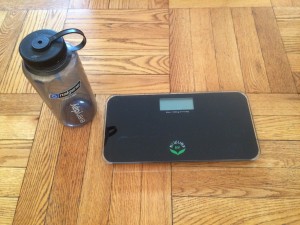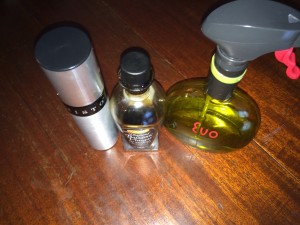Today is Super Bowl Sunday, and we have been bombarded with two weeks of hype and commercials, plus it is now February sweeps for the TV networks. Which reminded me of the connection between watching TV and eating. A connection I am well aware of personally, and something I continue to struggle with.
Watching TV is a passive endeavor, as you do nothing more than look at the screen. Growing up in the 60’s and 70’s, the TV was often the center of a family’s activity. We had a TV in the kitchen, so when I would eat breakfast, I would watch the news, or on Saturday, cartoons. Plus, when eating dinner, we would often have the TV on. My family’s den, had the primary TV in the house, and we often would bring food there to eat, or have snacks, all while watching TV. And watching sporting events on TV is sort of like tailgating, or being at the event, which typically involves eating.
On Super Bowl weekend, pizza deliveries are at their highest for the whole year, and in supermarkets, the big displays, in front of the aisles, are mostly for chips, dips, soda, beer, and anything else that can be eaten, or can be gulped, while watching the TV. On TV itself, food and drink commercials dominate the airways.
As a result, we grow up hardwired to associate food with watching TV. What else do we do when watching TV? And this connection has only grown as the TV has morphed into a home theater. What would it be like to go to a movie and not have some popcorn to share, a soda to drink, and maybe some Junior Mints as a chaser. It is also not a coincidence, that movie theaters now have even more snacks and food then was ever available before (e.g., pizza, pretzels, ice cream, etc.), plus the newest theaters have electrically adjustable reclining seats, with cup holders, duplicating that home den La-Z-Boy chair for watching TV.
Given that I have struggled with my post-surgery weight loss, I have been thinking back to some of the strategies I used when I lost all that weight from 2009 to 2011. One of those strategies was to watch less TV.
Just a few thoughts on that — some people do not have TV’s, and all the people I have met that do not have TV’s have been thin. Also, when I went away for summary camp as a kid, with no TV or computer, I always used to lose a considerable amount of weight during the summer. Coincidence? I think not.
That’s not to say I would give up watching TV, as it is valuable resource in providing sports coverage, the news, historical information, and entertainment. However, watching less TV can assist you in eating less, so I am trying to watch TV.
So what else can be done? First off, instead of watching TV read a book, exercise, garden, roam around the city/town, listen to music, write, all of which make it more difficult for us to eat while are doing that activity and which we have not been hardwired to eat when we engage in that activity. Also, you can exercise while you watch TV, so for me, I watch TV when I am doing my hour-long exercise in the morning on my stationary exercise bike.
Another strategy is to eat at a table, and not have the TV on when you eat a meal. Living alone, that is not always easy, as I personally know. Furthermore, it you feel like you want a snack while watching TV, then chose something that is filling, but with reduced calories.
Here are some substitutions you could make:
Popcorn instead of chips — even better, have air-popped popcorn, and if you want a bit more taste, spray the popcorn with oil (olive, corn, etc.) and then toss with Parmesan cheese, or if you want something sweeter, cinnamon.
Unsweetened Ice tea instead of soda (diet or regular) — for over 6 years I have not had one soda, nor sweetened drink, as they are high in calories and sugar (which can make you even hungrier, even diet soda), and if you want more flavor, squeeze some fresh citric juice into the ice tea, or even into plain water.
Salsa and vegetables instead of chips and salsa, and no creamy or cheesy dip — Cut celery, carrots, broccoli, cauliflower, tomatoes, green peppers, etc. into bite-sized portions, and have your guests use those to dip in the salsa instead of chips. Much more nutritious, lower in calories, and more filling.
Fresh fruit instead of cakes and pies — make up a platter of blueberries, strawberries, blackberries, raspberries, kiwi, oranges, grapefruit, etc. instead of cake or pie. If you just have a have a chocolate fix, then get a fondue pot, and melt dark chocolate with a high coca content (75% or more), and dip your fruit into that.
If all else fails, go for placing tape on the refrigerator and cabinets so that you have to break the tape to get more food. And I would also suggest looking at your TV guide, and only have the TV on for those shows, events, etc. that you really want to watch, rather than having it on 24/7. If you want some noise in the background, listen to music or the news from Internet streams, the radio, MP3’s, CD’s, etc.
So enjoy the Super Bowl today, but overall, watch less TV, and as a consequence, eat less.



